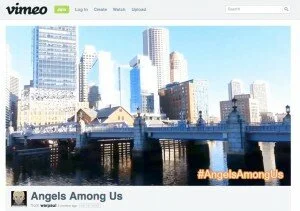 SnapChat was recently hacked. 4.6M user account names and their associated phone numbers were accessed and published on the web and put on dozens of torrent and mirroring sites. Users will be exposed to tons of additional spam and phishing exploits.
SnapChat was recently hacked. 4.6M user account names and their associated phone numbers were accessed and published on the web and put on dozens of torrent and mirroring sites. Users will be exposed to tons of additional spam and phishing exploits.
This prompted me to give my ten year old budding social media maven the following decidedly boring parental advice:
- The more accounts you have out there, the more likely this is to happen – it is better to be selective and strategic about which services you and your friends are going to use rather than trying out every single one and then getting bored 5 mins later and leaving a residue account to be hacked.
- Now that your account info and telephone number are out there, people may call your number or send you messages designed to trick you – they will look like messages from friends, etc. This is going to suck, and you are going to have to be very careful what you click on. I’d strongly suggest confirming by text any link a friend sends you before clicking on it.
- If you cannot confirm it, never, EVER, click on a link someone sends you in some sketchy way. 99% of the time it is phishing designed to steal from you.
- Ask a grown-up if you are at all uncertain – talk to your parents or go and INITIATE a separate note to the person (i.e. don’t reply to the orginal one) and ask them if they sent you something.
- Close down any accounts you are no longer using on a very regular basis – yes, I know this will be a tragic loss for your 3 followers on that system. Trust me, they will get over it -it is more fun to be mysterious anyway.
- Now is the right time to change all the passwords on all your accounts (now you understand my advice about having fewer dormant ones, huh?).
- Digital life sucks and it will almost certainly get worse before it gets better through biometrics or some other means, so be smart out there and try always to tell the difference between something that USEFUL and something that is merely NEW. You are the first generation growing up on the internet where strangers with bad intentions can get right into the least expected places – like your pocket, your purse, your chat stream with friends. Be careful out there.
If you enjoyed this post, you might enjoy my other posts on Apple / Google / Amazon / Big Tech, CyberSecurity, Internet / Big Data / Internet of Things, Mobile / Gadgets, Social Networking, or my recent curated links you might have missed on: Big Tech & Mobile, or Internet, IoT, Social, CybersecuritySubscribe – To get an automatic feed of all future posts subscribe to the RSS feed here, or to receive them via email enter your address in the box in the upper right or go here and enter your email address in the box in the upper right. You can also follow me on Twitter @cmirabile and on Google+.
 We’re all investors, but we’re no angels
We’re all investors, but we’re no angels I’m torn about this distributed solar electricity sales craze. The New York Times recently ran an article about how Wall Street is going nuts over Elon Musk’s solar company SolarCity. Companies like SolarCity turn the normal residential solar market on their head. Instead of selling you a solar installation and equipment, they borrow your roof, put their own install on it and sell you the electricity it generates. Other companies using this model include SunPower, SunEdison, Sunrun, Vivint, and Sungevity. Residential solar is growing. Why my unease?
I’m torn about this distributed solar electricity sales craze. The New York Times recently ran an article about how Wall Street is going nuts over Elon Musk’s solar company SolarCity. Companies like SolarCity turn the normal residential solar market on their head. Instead of selling you a solar installation and equipment, they borrow your roof, put their own install on it and sell you the electricity it generates. Other companies using this model include SunPower, SunEdison, Sunrun, Vivint, and Sungevity. Residential solar is growing. Why my unease? I recently did a deck and moderated a talk at the Angel Capital Association Leadership Conference in Boston about what different established angel groups are doing on screening deal flow – best practices, tools, sources, staffing, fees, how group size affects it, etc. Lots of data (based on a large survey of almost 100 angel groups, mostly in the US) – some of it is pretty interesting. I have been asked repeatedly to share the slides, so here they are (email readers can access them here).
I recently did a deck and moderated a talk at the Angel Capital Association Leadership Conference in Boston about what different established angel groups are doing on screening deal flow – best practices, tools, sources, staffing, fees, how group size affects it, etc. Lots of data (based on a large survey of almost 100 angel groups, mostly in the US) – some of it is pretty interesting. I have been asked repeatedly to share the slides, so here they are (email readers can access them here). When I think of Boston as a start-up community I am reminded of the beer commercial – though in this case, it might be “tastes great, less hype.” There is an absolute hive of activity going on here – great start-ups, great schools, vibrant investor ecosystem, incubators and accelerators of every kind, and events on a nearly 24×7 basis. But it is not a showy town. Entrepreneurs just try to get after it with an under-promise and over-deliver attitude, and that is what I love about the city.
When I think of Boston as a start-up community I am reminded of the beer commercial – though in this case, it might be “tastes great, less hype.” There is an absolute hive of activity going on here – great start-ups, great schools, vibrant investor ecosystem, incubators and accelerators of every kind, and events on a nearly 24×7 basis. But it is not a showy town. Entrepreneurs just try to get after it with an under-promise and over-deliver attitude, and that is what I love about the city.
 A really smart investor I know named Tom Huntington (who blogs at On Strategy & Execution) likes to make the point that, in a lot of ways, Market ends up being more important than Team in determining the success of a start-up. It’s a variation of the old jockey vs. horse question (for a lot of interesting takes on that, see my
A really smart investor I know named Tom Huntington (who blogs at On Strategy & Execution) likes to make the point that, in a lot of ways, Market ends up being more important than Team in determining the success of a start-up. It’s a variation of the old jockey vs. horse question (for a lot of interesting takes on that, see my  I recently did a deck and moderated a talk at the Angel Capital Association Leadership Conference in Boston about ways angel groups may evolve to adapt to changing market conditions over the coming years, particularly crowdfunding platforms allowing for new kinds of less-traditional investing (i.e. less contact with the companies, potentially less value-add, larger, less-tightly integrated syndicates). The observations represent the thinking of the leaders of some of largest groups in California, Massachusetts, Texas. I have been asked repeatedly to share the slides, so here they are (email readers can access them here). PS: thanks to George McQuilken of Angel Investing News for the nice write up on this. Maia Heymann of Common Angels, Ralph Meyers of TechCoast Angels and Jamie Rhodes of Central Texas Angel Network were awesome to work with and brainstorm with.
I recently did a deck and moderated a talk at the Angel Capital Association Leadership Conference in Boston about ways angel groups may evolve to adapt to changing market conditions over the coming years, particularly crowdfunding platforms allowing for new kinds of less-traditional investing (i.e. less contact with the companies, potentially less value-add, larger, less-tightly integrated syndicates). The observations represent the thinking of the leaders of some of largest groups in California, Massachusetts, Texas. I have been asked repeatedly to share the slides, so here they are (email readers can access them here). PS: thanks to George McQuilken of Angel Investing News for the nice write up on this. Maia Heymann of Common Angels, Ralph Meyers of TechCoast Angels and Jamie Rhodes of Central Texas Angel Network were awesome to work with and brainstorm with. I recently did an interview with Greg Stoller, a Boston College Carroll School of Management professor of entrepreneurship who is studying risk from different perspectives. He asked me for my thoughts on risk from the perspective of early stage investors, and since I have a lot of entrepreneurs as Scratchpaper readers, I figured I’d share my answers here.
I recently did an interview with Greg Stoller, a Boston College Carroll School of Management professor of entrepreneurship who is studying risk from different perspectives. He asked me for my thoughts on risk from the perspective of early stage investors, and since I have a lot of entrepreneurs as Scratchpaper readers, I figured I’d share my answers here.